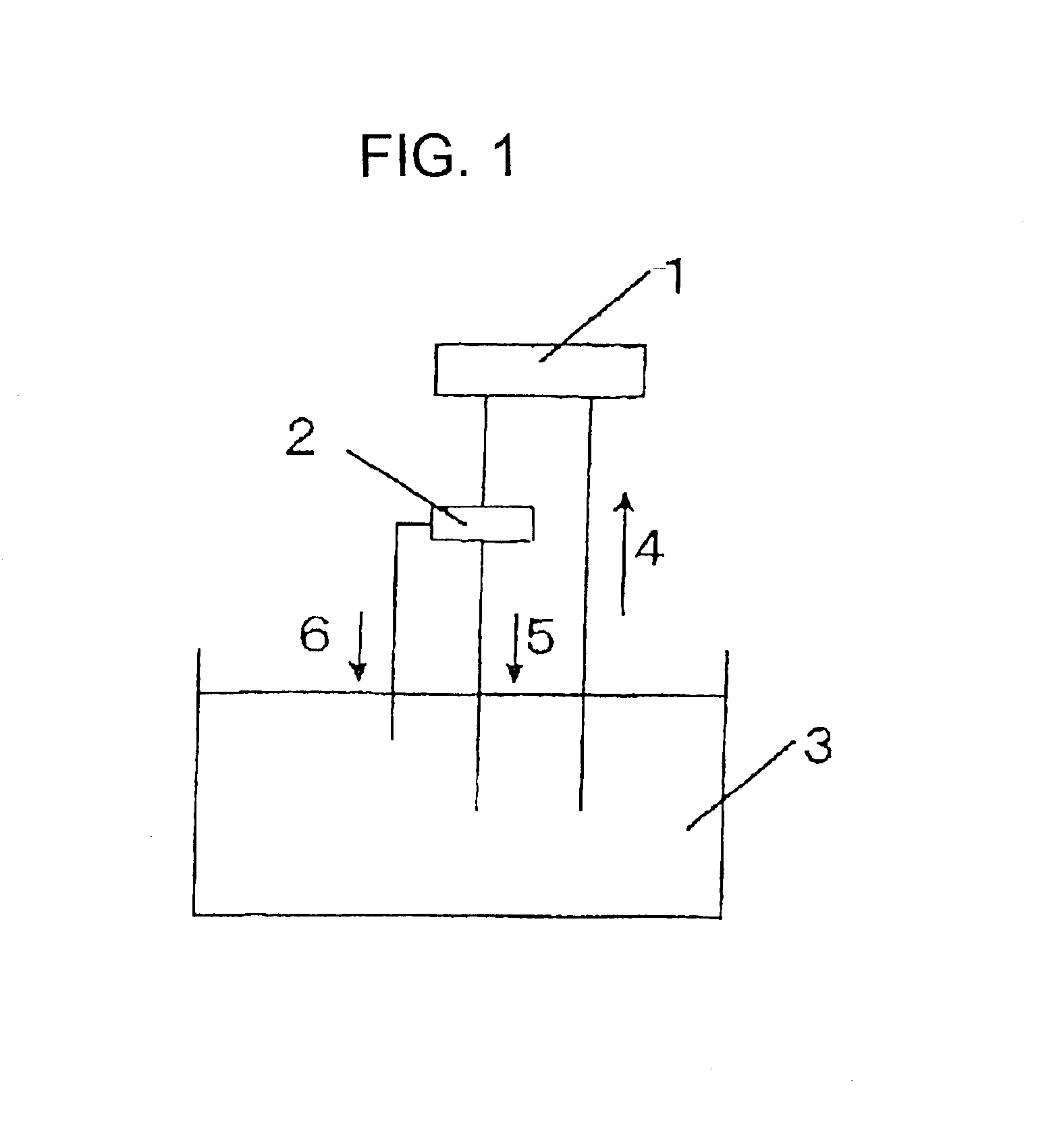Cationic electro-deposition coating compositions
a technology of electro-deposition coating and cationic resin, applied in the direction of electrolytic coatings, polyurea/polyurethane coatings, textiles and papers, etc., can solve the problems of deterioration of coating finish, reduced amount of coating to be supplemented, and inability to meet the requirements of electro-deposition, etc., to achieve good weather resistance and corrosion resistance, long-term stability of coating, excellent adhesion and moisture resistan
- Summary
- Abstract
- Description
- Claims
- Application Information
AI Technical Summary
Benefits of technology
Problems solved by technology
Method used
Image
Examples
preparation example 1
[0066]After the addition of 1143 g of “EPICOAT 828EL” (epoxy resin, trade name; product of Japan Epoxy Resins Co., Ltd., epoxy equivalent: 190, molecular weight: 380), 457 g of Bisphenol A and 0.2 g of dimethylbenzylamine, the resulting mixture was reacted at 130° C. to give an epoxy equivalent of 800. The reaction mixture was then diluted with 100 g of butyl cellosolve.
[0067]To the diluted mixture were added 160 g of diethanolamine and 65 g of ketimine-blocked diethylenetriamine, followed by reaction at 120° C. for 4 hours. To the reaction mixture was added 355 g of butyl cellosolve, whereby an amino-containing epoxy resin (A-1) having an amine value of 62 mg KOH / g, and a solid content of about 80% was obtained.
preparation example 2
Preparation of an Acrylic Resin (a1) for Modification
[0068]Polymerizable unsaturated monomers and organic solvent to be used in this Example were all fed with a nitrogen gas for 1 hour for deaeration (deoxidization) prior to use.
[0069]In a reaction container equipped with a thermometer, a thermostat, an agitator, a reflux condenser and a dropping funnel, 30 g of propylene glycol monomethyl ether was charged as a solvent. While feeding a nitrogen gas, the solvent was heated to 115° C. Then, a mixture containing, as polymerizable unsaturated monomers, 10 g of styrene, 20 g of methyl methacrylate, 36 g of n-butyl methacrylate, 30 g of 2-hydroxyethyl methacrylate, and 4 g of acrylic acid and, as a radical polymerization initiator, 7 g of 2,2′-azobis(20methylbutylonitrile) was added dropwise over 3 hours. After the reaction mixture was allowed to stand at 115° C. for 1 hour, 0.5 part of 2,2′-azobis(2-methylbutylonitrile) and 5 g of propylene glycol monomethyl ether were added dropwise ov...
preparation example 3
[0070]After the addition of 1018 g of “EPICOAT 828EL” (epoxy resin, trade name; product of Japan Epoxy Resins Co., Ltd., epoxy equivalent: 190, molecular weight: 380), 382 g of Bisphenol A and 0.2 g of dimethylbenzylamine, the resulting mixture was reacted at 130° C. to give an epoxy equivalent of 700. The reaction mixture was then diluted with 100 g of butyl cellosolve.
[0071]To the diluted mixture were added 280 g of the acrylic resin (a1) for modification obtained in Preparation Example 2, 153 g of diethanolamine and 65 g of a ketimine-blocked diethylenetriamine, followed by reaction at 120° C. for 4 hours. To the reaction mixture was added 288 g of butyl cellosolve, whereby an amino-containing epoxy resin (A-2) having an amine value of 60 mg KOH / g and a solid content of 80% was obtained.
[0072]The compositions of the resulting amino-containing epoxy resins are shown in Table 1.
[0073]
TABLE 1PreparationPreparationExample 1Example 3Amino-containing epoxy resin(A-1)(A-2)“EPICOAT 828EL...
PUM
| Property | Measurement | Unit |
|---|---|---|
| amine value | aaaaa | aaaaa |
| hydroxyl value | aaaaa | aaaaa |
| hydroxyl value | aaaaa | aaaaa |
Abstract
Description
Claims
Application Information
 Login to View More
Login to View More - R&D
- Intellectual Property
- Life Sciences
- Materials
- Tech Scout
- Unparalleled Data Quality
- Higher Quality Content
- 60% Fewer Hallucinations
Browse by: Latest US Patents, China's latest patents, Technical Efficacy Thesaurus, Application Domain, Technology Topic, Popular Technical Reports.
© 2025 PatSnap. All rights reserved.Legal|Privacy policy|Modern Slavery Act Transparency Statement|Sitemap|About US| Contact US: help@patsnap.com



